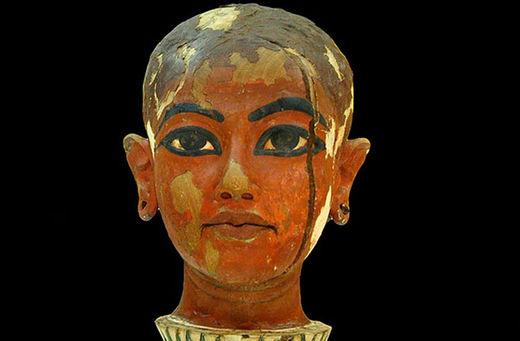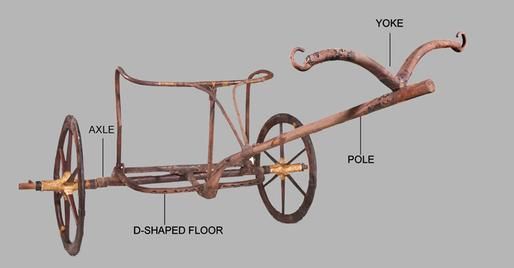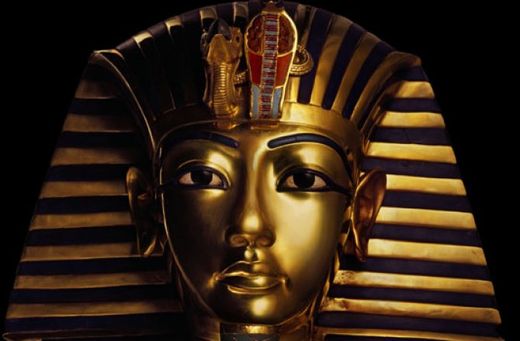
The study indirectly dismisses a recent theory which ascribed King Tut's demise to a horrific chariot accident. According to the claim, which was detailed on Sunday in a new British documentary, the high-speed chariot crash would have smashed the boy king's rib cage and many of his internal organs, including his heart.
"It is not the first time that this mode of death has been mentioned," Salima Ikram, professor of Egyptology at The American University in Cairo, told Discovery News.
"I wonder how could they say his internal organs were crushed. We won't know until the canopic jars housing his organs are examined," she said.
Frank Rühli, Head of the Centre for Evolutionary Medicine at the University of Zurich in Switzerland, agreed.
"Moreover, the mechanism of explanation for the accident is not fully provable," Rühli told Discovery News.
According to the researchers, the diagnosis of trauma caused by a chariot accident is one of the many hypothesis about King Tut's death for which not enough evidence can be found.
To prove their point, Ikram and Rühli reviewed medical claims about the best-known pharaoh of ancient Egypt, starting from as far back as 1925, when the mummy was unwrapped in the outer corridor of the tomb of Seti II (KV15) by Howard Carter and others.
On that occasion, the mummy suffered some serious damage: it was dramatically disarticulated in the attempt to remove jewels and amulets.
Published in the latest issue of the Journal of Comparative Human Biology HOMO, the study is most comprehensive scientific assessment of the medical diagnoses on King Tut so far.

King Tut's chariot consisted of a D-shaped platform, connected by a pole and a yoke, on which the pharaoh stood to drive the two horses. Supported by two wheels with a 2-meter-long (6.5-foot-long) axle in hard wood, the chariot is able to hold a static load of more than 100 kilograms (220 pounds). The chariot currently on display at the "Tutankhamun and the Golden Age of the Pharaohs" exhibit in New York's Discovery Times Square Exposition appears in this photo.
Since its discovery and until the 21st century, King Tut's mummy has been officially examined only twice. In 1968 UK anatomist Ronald Harrison took the first X-rays. Ten years later James Harris, a dentist from Michigan, examined the body inside the burial as he took high-quality radiographs of the teeth.
In 2005, the mummy underwent non invasive CT scans. A team of international scientists, which included Rühli, reviewed over 17,000 images of the mummy, while ancient DNA analysis was carried out in the following years.
"It was the first-ever published CT of any positively identified ancient royal mummy, as well as the first published DNA study. Yet some results, especially on the molecular part, have been questioned by others," Rühli said.
According to the researchers, Tut's case shows the complexities of palaeopathology: a single individual, who has been studied in detail by so many groups, can yield so many and sometimes contradictory results of analyses -- not to mention speculations often resting in the realm of fantasy.

"As neither his body nor historical texts provide a definitive explanation for his demise, a lot of conjectures based on slim evidence have come forth," she added.
Indeed, since the initial examination of the mummy by Carter and others, dozens of medical claims have been proposed. Diagnoses ranged from autologous or infectious diseases, metabolic disorders, tumorous conditions, trauma and even murder.
Overall, King Tut was diagnosed with a series of pathologies which included celiac disease, clubfoot, pigeon chest, Klippel-Feil syndrome, adrenal tumor, gynecomastia, endocrine abnormalities, Marfan's syndrome, tuberculosis, epilepsy, infestation by bilharzia and meningioma.
Claims of traumatic injuries have included a blow to the head by murderers, chest and face injuries caused by another chariot accident, a wound to the left ear due to an injury or even an insect bite -- resulting in a cerebral hemorrhage, and a kick in the chest by a horse or a hunting accident with a hippopotamus.
The CT-based analyses from 2005-2009 were able to rule out the majority of the pathologies proposed for the boy king.
Analysis of the body revealed a femur fracture, which may have caused the premature death of the king. Hawass and colleagues, who authored the study, suggested that the king's leg had been broken through an accident of some sort and that the pharaoh's death might have been due to septicemia and other complications to the wound.
"To me femur fracture is still likely. However, it is not fully proven, especially since in the 1920s a lot of damage has been set to the mummy," Rühli told Discovery News.
According to the researchers, further possible investigations should include a close macroscopic examination of the body, CT scanning of his separately stored internal organs, as well as radiological-anatomical comparison or DNA-analyses with his presumed closest relatives.
However, even with the best medical and forensic work, it is doubtful that all aspects of Tutankhamun's health and possible causes for his death will ever be known.
"It is just possible he died of the flu," Ikram said.



Reader Comments
to our Newsletter